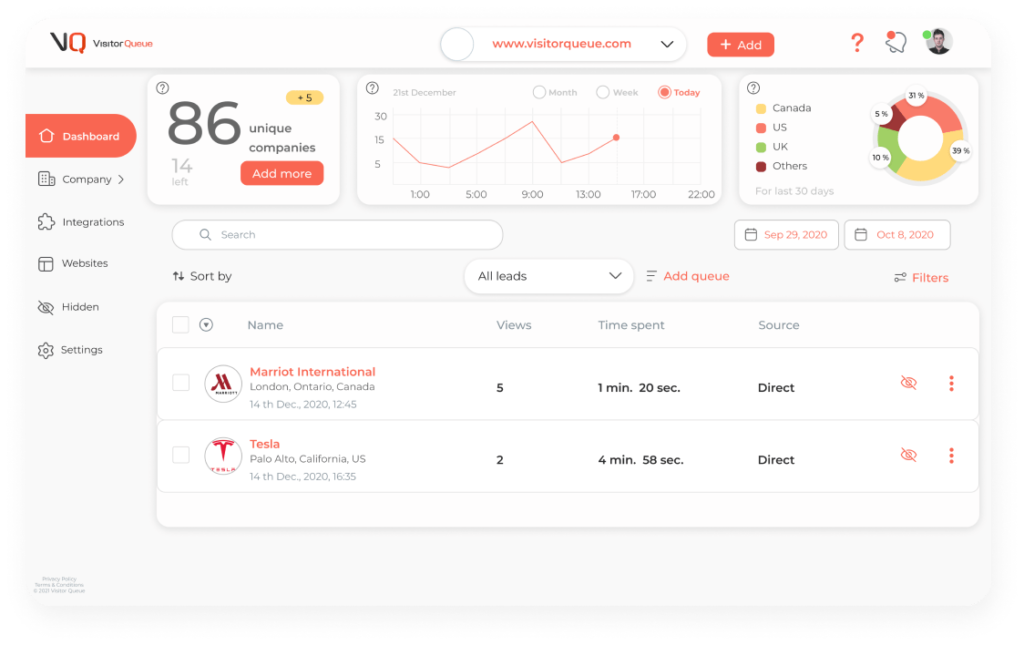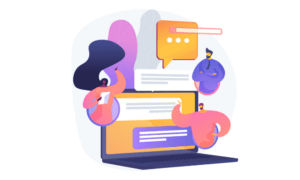In the world of sales, leads are everything. They represent opportunities that can lead to conversions and revenue for your company. But, with so many different types of sales leads, it can be confusing to tailor your efforts to each of them. In this guide, we are going to go through six different types of leads and examples of how to properly target them based on their needs. First, let’s go over the importance of understanding the different types of sales leads.
Why It’s Important to Understand the Different Types of Sales Leads
Understanding the different types of sales leads is crucial. Here are a few of the main benefits of knowing the types of sales leads.
Improved Conversion Rates
Tailoring your sales and marketing efforts to the characteristics of different lead types can improve conversion rates. By delivering the right message at the right time, you can increase engagement, build trust, and ultimately drive more conversions. This can also help with how you use your resources.
Resource Optimization
Not all leads are created equal. Because of this, allocating resources to all of your resources equally across all types of sales leads doesn’t make sense. By categorizing your leads based on their level of interest, readiness to buy, and fit with your ideal customer profile, you can better prioritize your efforts. And, focus your resources where they are the most likely to yield results.

Provides a More Targeted Approach
Every lead has different needs. Each of the types of sales leads requires a tailored approach to effectively nurture and convert them into paying customers. By recognizing the characteristics of leads, your sales and marketing teams can develop strategies that resonate with their specific needs. For example, you wouldn’t send a cold lead the same promotion that you would send a hot lead that is on the verge of converting.
Builds a Long-Term Relationship
Different lead types represent different levels of readiness to purchase or convert. But, they should all have the potential to become a long-term customer if they are properly supported. By nurturing relationships with leads at every stage of the buyer’s journey, you have the opportunity to increase ongoing engagement and a long-term relationship. Let’s talk a little more about the buyer’s journey and how it relates to the different types of sales leads.
Buyer’s Journey 101
The buyer’s journey includes three main stages, awareness, consideration, and decision-making. By understanding your buyer’s journey, and where each type of lead falls, can help you understand the needs and pain points of the leads in each stage. As a result, you can tailor your messaging, content, and interactions to meet the needs of your prospects and where they are in the journey. Whether educating prospects in the awareness stage, providing solutions in the consideration stage, or facilitating purchasing decisions in the decision stage, aligning sales and marketing efforts with the buyer’s journey enhances relevance, engagement, and ultimately, conversion rates. Now that you’re familiar with the basics, let’s go over the different types of sales leads that you need to know about.
1. Cold Leads
Cold leads are businesses or people who have shown little to no prior interest in your company. These prospects are often acquired through networking events, purchased email lists, or paid advertising campaigns. While cold leads present a challenge, they also offer potential for conversion through targeted strategies. These leads are at the very start of the awareness stage, where they have yet to know you can solve their pain points. An example of this could be a software company running YouTube Ads that specifically play on channels like HubSpot and Mailchimp. These ads should address specific pain points and provide a broad overview of what your company does, without going too in-depth.
2. Warm Leads
Warm leads have some interest or previous engagement with what your company has to offer. They might have signed up for your newsletter, downloaded a whitepaper, or even attended a webinar. Although they are not ready to make a purchase right now, warm leads are curious about your company. This makes them more receptive to further communication. This is where email drip campaigns can be extremely effective.
3. Hot Leads
Hot leads display a high level of interest and often intend to purchase. They may have requested a demo, contacted a sales rep, started a free trial, or expressed urgency in their communication. Hot leads are typically in the final stage of the buyer’s journey and require personalized attention to capitalize on them. This is where your customer support is crucial. A common example of a hot lead is booking a demo. After the demo has completed, add these prospects to an email campaign that promptly follows up, ensuring they got what they are looking for. You can even offer a discount code if they don’t convert right away.
4. Qualified Leads
Qualified leads meet specific criteria that align with your company’s ideal customer profile. They have the budget, authority, need, and timeline necessary to make a purchase or convert. Qualified leads are deemed a good fit for your offerings, even if you have yet to contact them. An example of a qualified lead could be discovered with a website visitor identification software, like Visitor Queue, that can tell you what companies are visiting certain pages on your website. So, if a company is visiting your pricing page, you know that they are likely a qualified lead.
5. Inbound Leads
Inbound leads are generated through organic marketing efforts. This can be done through organic social media, search, or content marketing like blogging. These leads are seeking out information related to their needs or interests. Inbound marketing aims to attract, engage, and convert these leads by delivering valuable content. A great example of this is posting regular blog content that relates to your ideal customer profile. In addition, following up with newsletters can help inbound leads remember your company and keep you at the top of their mind.
6. Outbound Leads
On the other hand, outbound leads are actively pursued by sales and marketing teams. This may include cold calling, email marketing, social selling, and targeted advertising. While outbound lead generation requires more effort compared to inbound lead generation, it can result in more opportunities, faster. A good example of this would be running a LinkedIn ad campaign targeting a specific industry or job title that falls in your ideal customer profile. You can offer an enticing download to collect their information and gauge their interest.
How to Qualify Leads with Visitor Queue
It can be hard to know if your lead generation efforts are working if you don’t know who is visiting your website. With the help of Visitor Queue, you can find out what companies are visiting your website, how they got there, the pages they viewed, and the time they spent on each page. You’ll also get an overview of what the company does, their industry, size, and other firmographic information to help you qualify them. Additionally, we also provide employee contact information including email addresses, phone numbers, and LinkedIn profile to help you reach out. With the help of Visitor Queue, you can generate and qualify leads based on their visit activity. Try Visitor Queue for free today, start your 14-day free trial here.

Wrapping Up
Knowing and understanding the different types of sales leads can help you tailor your marketing and sales efforts based on their current interest level. By doing this, you are more likely to lead your prospects throughout the buyer’s journey to the point of conversion. Remember, it’s crucial for any successful lead generation campaign to lean on your CRM in order to properly track and manage your leads. As always, if you have any questions about using Visitor Queue to generate and qualify leads, do not hesitate to reach out.
 Identify
Identify Personalize
Personalize Benchmark
Benchmark Agencies
Agencies Integrations
Integrations Case Studies
Case Studies Use Cases
Use Cases Blog
Blog Resources
Resources








